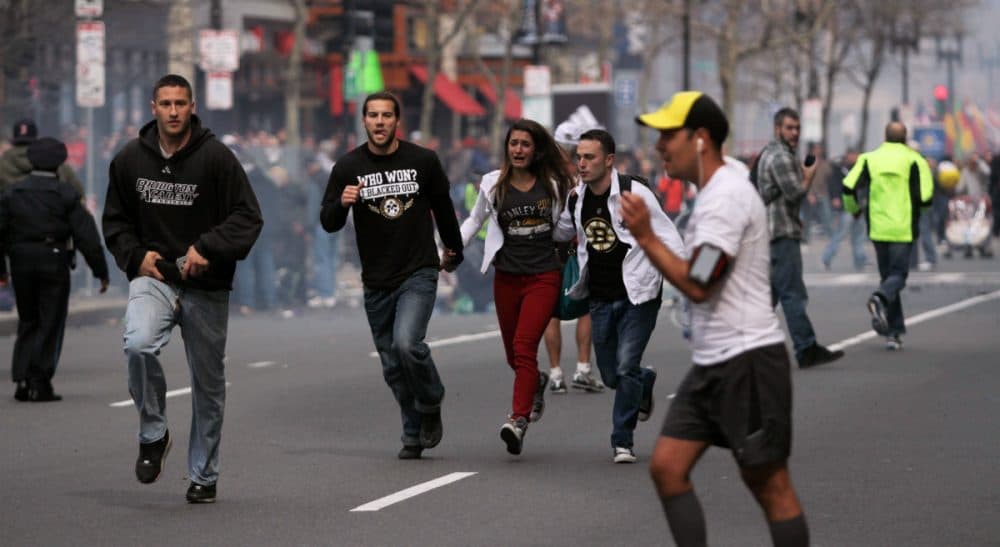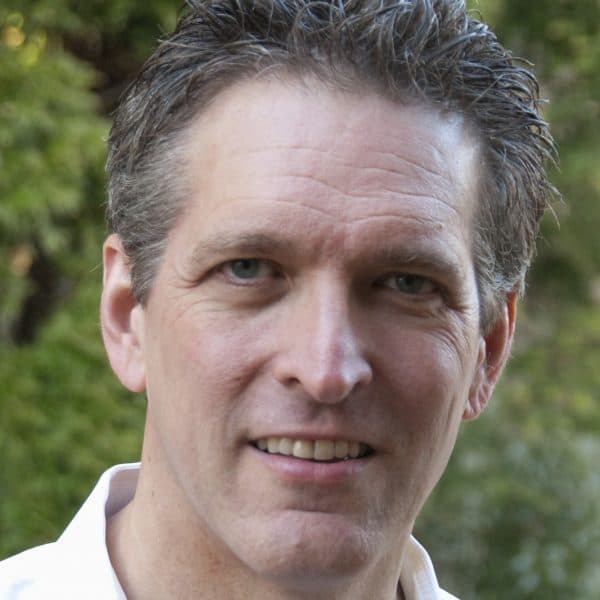Advertisement
Violence In A Social Age

One of the first things we humans do when we find ourselves in the midst of violence and mayhem is go, more or less automatically, into social mode. We try to connect with others — family, friends, strangers, almost anyone will do.
I’d never considered this until a year ago, when I was a short walk from the finish line of the marathon at the moment the bombs went off. Ever since, I’ve been thinking about the links between our violent culture and our social nature. After all, thanks to technology we live in a highly social age. Is this changing how we process violence? Could it be affecting violence itself?
These big questions can’t be answered in a brief piece like this. Instead, I’ll share how my experience that day changed my thinking.
One of the first things we humans do when we find ourselves in the midst of violence and mayhem is go, more or less automatically, into social mode.
I’d caught a morning train to Boston, not for the marathon but the Red Sox. A friend had scored two tickets to the Patriots' Day game. The Sox beat Tampa Bay 3-2 in an excellent game.
As we walked from Fenway into Kenmore Square, I saw the runners making their way up Commonwealth Ave. When we parted at Massachusetts Ave, I decided to walk the 10 blocks to the finish line, just for the spectacle.
I was about three blocks away when it happened. I don’t recall hearing the bombs and, being a block from Boylston Street, I couldn’t see the smoke. What I do remember is how the crowd came to a sudden halt about 20 yards ahead of me, at a cross street the police were hurriedly blocking off, and reversed direction. The cops were ordering everyone to flee the area as quickly as possible.
I started on foot back to South Station, but it was tricky because of the ensuing chaos and more closed streets. My phone wasn’t getting Internet, and for a hour I had no idea what had happened, though I overheard rumors of bombs.
Soon rescue vehicles came screaming from Copley, and little knots of people were gathering on street corners, talking, shaking their heads, in some cases weeping. Here and there were marathoners getting gentle hugs and back-pats from supporters, who in some case wore identical brightly colored t-shirts with slogans like “Team Katie.” I wanted to join them and find out more, but everyone was so clearly upset, it felt intrusive and wrong.
As I arrived at South Station, my wife called from home to tell me about the early news reports and first terrible images.
The train was less than half-empty. I was fine and hadn’t witnessed the violence, but I felt shaken and confused. Five minutes later and I might have been right where it all unfolded.
I had an urge to find my own version of Team Katie. The closest thing to a street corner was my phone, which now had Internet. So I went to Twitter. I’m not a prolific tweeter and have never understood what drives some people to sharing every waking thought and experience with their followers. My guess was they were seeking to fill some kind of inner void. I had nothing original to report or say. I simply needed to connect. So I tweeted:
I was a few blocks away from the #bostonmarathon explosions. Was walking to see finish line Am safe. Awful chaos & sadness.— William Powers (@HamletsBB) April 15, 2013
Then added:
Had just taken a couple pics of race. Runners looked weary but relieved/happy. Then a big crowd surge. People fleeing the terror.— William Powers (@HamletsBB) April 15, 2013
It was a gift to be able to join the conversation. And though we’ve never met in person, when a few of my followers tweeted back supportive words, I was grateful. All of that, from less than 280 characters.
The bombing happened just four months after the Newtown school shooting, an event that made me wonder about our violence-saturated culture — the movies, TV shows and video games we pipe into our minds, and those of our children. The news, with its relentless focus on violence, and the social-media response to it, seemed to be part of the problem.
We’re drawn to this fare by mammalian instincts seemingly beyond our control. But it’s how we respond to violence that defines us as something more than primal creatures. And this is where the power of our social existence comes in.
Other animals are social, but our social lives have a strong moral underpinning that defines us. I now think one reason we need to connect about violence after it happens is that we want to get at the meaning of this disturbing aspect of ourselves, transcend it so it doesn’t destroy us.
Other animals are social, but our social lives have a strong moral underpinning that defines us.
In his 2011 book “The Better Angels of Our Nature: Why Violence Has Declined,” Stephen Pinker offers compelling evidence that humans have actually been growing less violent over the centuries, as we have become more civilized, thoughtful and caring about others.
“This reflective mindset may be a product of enhanced education,” he writes, “and it may also be a product of electronic media.” He calls the eyewitness reports of violence that are a staple of today’s media “empathy technologies.”
In other words, when we respond socially to violence through media connections, we are working actively to transcend it. This week, in observing the first anniversary of the event — a social commemoration — we’re doing it again.
Sometimes, the very worst things about humanity have a way of bringing out the very best.
Related:
- All Cog coverage of the Marathon bombings
- Beyond The Finish Line: WBUR’s complete 2014 Boston Marathon coverage
